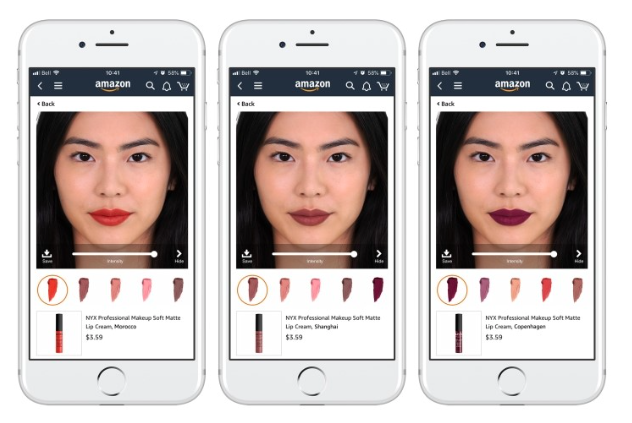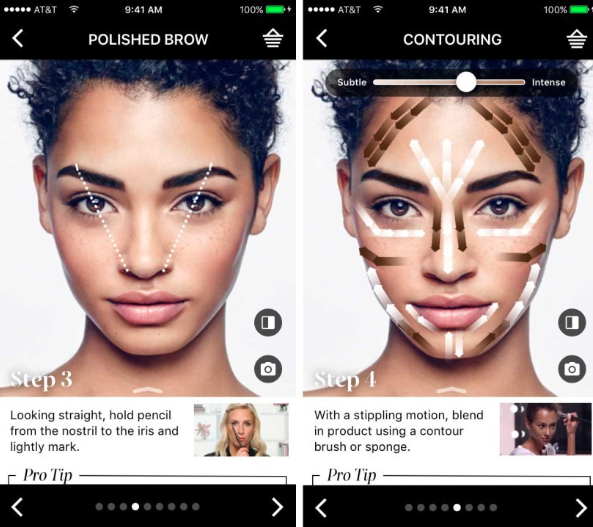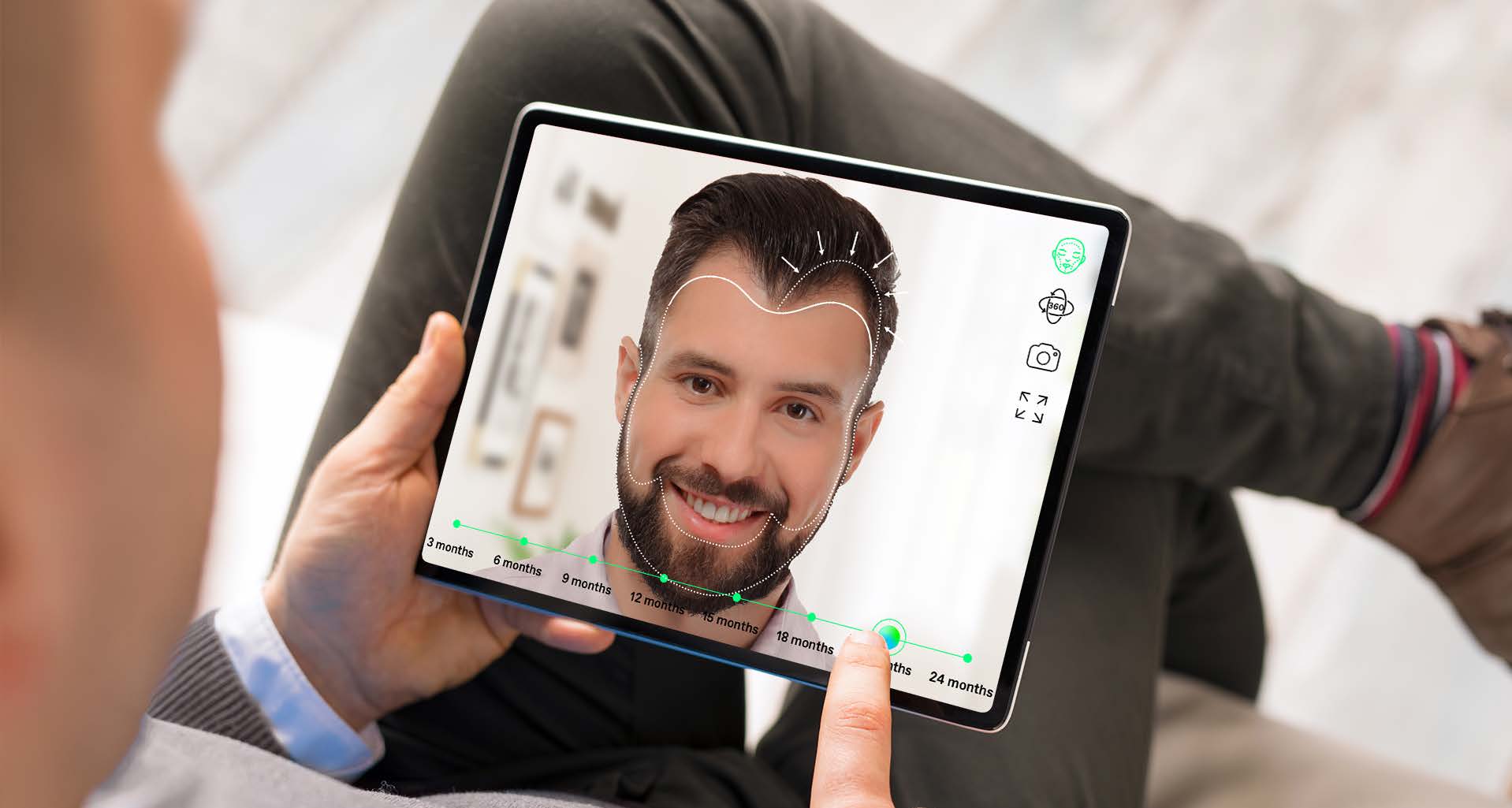5 ways to upgrade the Beauty Industry with Augmented Reality
The most beautiful Digital Experiences
“Beauty is an experience, nothing else.”
It was the British writer D.H. Lawrence who brought beauty together with experience back in the 20th century, long before the invention of Augmented Reality – of course in a completely different context, at a completely different time. What he certainly didn’t know, is how relevant his quote would still be in the modern world. Because even in our technologically advancing world, beauty is still an experience – a digital experience.
Making life both, beautiful and convenient – with AR!
It’s a fact that the beauty and cosmetics industries can no longer hide from the digital transformation – on the contrary, they are already part of it. Just like our favorite immersive technology with the charming name Augmented Reality (AR). So here come five stunning ways AR is making an impact on the beauty industry and taking digital experiences to a new, future-proof level.
1. Virtual Try-Ons: Try before you buy
Who hasn’t experienced it? The concealer looks great when shopping online, but is that even my tone? A new hair color is needed – but who can guarantee that it will suit me? Augmented Reality offers the solution: with virtual try-ons, you can try out the product on your own face in advance, purely digitally. The cosmetics company L’oreal, for example, has often adopted such an Augmented Reality solution, enabling customers to try out their beauty favorites before they buy them – from the comfort of their own homes or in stores.
Lipsticks, makeup, hair dyes – all of these can be changed and tested live thanks to AR. Behind this is an artificial intelligence that perfectly recognizes facial features and skin specifics, projects cosmetic products realistically onto faces, and goes far beyond simple AR filters. It’s not a feature, it’s a service.
2. Buy after you try 😉
Once an AR app has been created, it can be easily linked to the company’s own online store. So while the product is still being tried out virtually, a purchase can be made within. Speed and efficiency are the key words here. After all, if the product has convinced virtually, no time should be lost. With just a few clicks, it lands in the shopping cart and leaves no time for doubt. The purchase decision is positively influenced, and trying out the products becomes an entertaining shopping experience.

source: L’oreal x Amazon
Online giants like Amazon have also recently integrated Augmented Reality beauty services for certain brands into their online stores. Thanks to the collaboration with L’oreal, the brand’s lipsticks can now also be experienced there with the “virtual preview” button in live mode and then purchased directly.
3. Virtual Tutorials: Do it right.
Often, Beauty products are only as good as the make-up skills of the user. Too bad we can’t all be trained makeup artists! But Augmented Reality lets us become some, at least for a short time: The Virtual Artist of the brand Sephora from 2017 has various virtual tutorials to apply beauty products correctly. Whether it’s highlighting, contouring, eyeshadowing, or taking the eyeliner and brow game to the next level, five different modes make it possible to apply perfect makeup with just little know-how. The AR app recognizes the features of the face and visualizes how and where exactly which product should be applied to achieve an enchanting result.

source: Sephora
4. Magic Mirrors und digital shop windows
In an attempt to lure more customers into stores, the term “digital shop windows” is being used more and more frequently these days. The idea is as simple as it is efficient: a person walks past a shop window and instead of just seeing the latest items on display, they are projected directly onto the person’s body with the help of AR. What is becoming an increasingly important topic, especially for the fashion industry, is already possible for the beauty industry thanks to so-called Magic Mirrors: Instead of placing normal mirrors in the cosmetics departments of stores, Magic Mirrors await customers with practical try-ons, information about the product, or details about the location where the respective product can be found in the store. Creativity can be given free rein when placing the Magic Mirrors: In front of of the cosmetic store, inside of it, at events and trade fairs or simply in the public restroom, where the latest eye shadow is worn by chance. Because in a world that is becoming increasingly digital, you never know where the next customers will be convinced of a product!
5. When Make-up is not enough: AR Plastic Surgery
Cosmetic products are great, but help only temporarily. Many users are unhappy with their natural appearance and decide to change their visual appearance permanently. The keyword? Plastic surgery. Whether it’s a lift, nose-job, breast augmentation or hair transplants, the use of Augmented Reality can visualize what might be within seconds. With intelligent facial recognition, the technology can accurately identify all facial features, giving patients a picture of what they would look like after a procedure.

This also reduces the number of visits to the clinic, as appointments can simply take place online and consultations become virtual. The procedure also saves the attending physicians a lot of time, makes it possible to advise even more patients, and eliminates the need for customers to travel again and again.
AR is thus a smart decision-making aid that gives undecided patients more incentive to make their dreams come true. After all, if you have already experienced the result up close, you can not be disappointed. But beauty is in the eye of the beholder. All Augmented Reality can do is upgrade the experience: as a helping hand, service provider, digital advisor or virtual view into the future. Because as D.H. Lawrence said: “Beauty is an experience, nothing else” – and that’s how it should stay.
